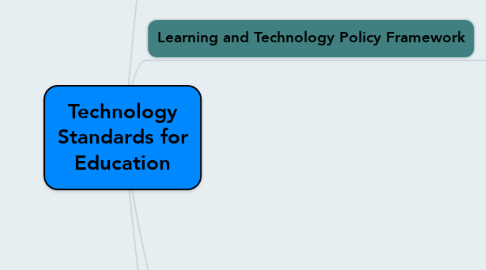Technology Standards for Education
by Sarah Worthington

1. Program of Studies
1.1. Ability to use wide range of processes to access information
1.2. communicates with a variety of audiences
1.3. Uses technology in a good moral and ethical way
1.4. Seeks alternative viewpoints using technology
1.5. Have the skills required to use a variety of productivity tools and techniques
2. Learning and Technology Policy Framework
2.1. Student Centered Learning: technology is used to personalize and create authentic learning experiences.
2.2. Research and Innovation: education professionals read, review and participate in sustaining and advancing technology in education.
2.3. Professional Learning: education professionals develop and maintain the skills to use technology in support of learning.
2.4. Leadership: education leaders continue to improve the systemsm in support of student centered learning and effective teaching
2.5. Access, Infrastructure and Digital Learning Environments: gives access to all students, teachers and educational professionals, devices, high speed networks and reliable digital learning environments.
3. ISTE Standards for Students
3.1. Empowered Learners: students take an active role in choosing and achieving their learning goals through technology.
3.2. Digital Citizen: students understand the rights and responsibilities of working with technology and use it in safe, legal and ethical
3.3. Knowledge Constructor: students use a variety of digital tools to create knowledge and meaningful learning experiences for themselves and others
3.4. Creative Communicator: students express themselves clearly through digital technology using appropriate tools
3.5. Global Collaborator: students use technology to broaden their perspectives and to work with others locally and globally
4. ISTE Standards for Teachers
4.1. Inspire Student Learning: teachers use technology to facilitate and create learning experiences in reality and virtual worlds.
4.2. Design and Develop Digital Learning Experiences and Assessments: teachers maximize learning using age appropriate tools.
4.3. Model Digital Age Work: teachers show knowledge and skills in professional way
4.4. Promote and Model Digital Citizenship and Responsibility: teachers use technology legally and ethically in their classroom.
4.5. Engage in professional Growth and Leadership: teachers continuously improve, promote and demonstrate the effective use of digital tools.


